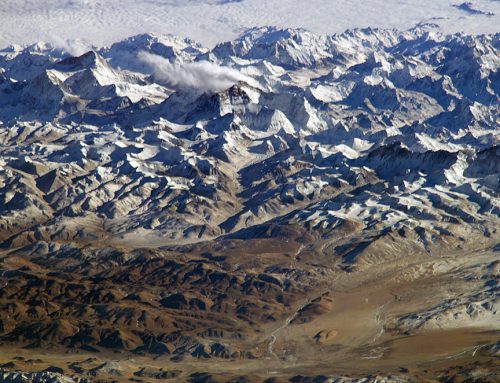
Ancient Chinese art: Song Dynasty painting
General themes of ancient Chinese art
From the earliest Stone Age art to the Ming Dynasty in 1500 AD, Chinese artists took up the same themes over and over again. They were interested in swirling lines. They were interested in nature: animals, trees, flowers, rocks, water. Chinese artists wanted to express the relationship between people and nature.
More about Stone Age art in China
Stone Age architecture too
The Stone Age in China
All of our History of China articles
Pottery, bronze jars, and lacquer boxes
But there were also big changes in Chinese art, some caused by new ideas within China, and some by new ideas coming from India, Central Asia, or West Asia. In the Stone Age, Chinese artists experimented with pottery.
History of pottery
They used swirling brushwork to decorate the pots – that continued throughout Chinese art. Beginning in the Shang Dynasty, artists also cast bronze jars in molds with designs of dragons, elephants, and other creatures. During the Zhou Dynasty, Chinese artists also began to make all kinds of lacquered boxes.
When was the Zhou Dynasty?
What is lacquer?
How do you make bronze?

Ancient Chinese art: T’ang dynasty oxen
Painting landscapes, animals, and people
But painting people and landscapes came very late to China, spreading slowly east across Asia; while people were painting images in 30,000 BC in Europe, and by 9000 BC in Egypt and Mesopotamia, and by 500 BC in Iran, paintings of people and trees only reached India with the rise of the Silk Road about 300 BC, and came to China about the same time, with the first Eastern Zhou paintings on silk cloth.
Eastern Zhou dynasty
Chinese art in the Zhou Dynasty
Where does silk come from?
Buddhism and ancient Chinese art

Song Dynasty painting of a rabbit and a tree
When Chinese people learned about Buddhism, under the Han Dynasty, they also learned about Buddhist art styles in India, and these new styles had a huge effect on Chinese art.
What is Buddhism?
Chinese sculptors learned to make life-size stone statues. About the same time, traders on the Silk Road began to bring Roman blown glass to China. Chinese potters, perhaps trying to imitate blown glass, soon created porcelain. Around the same time, Chinese artists invented paper and began to use it to paint on.
Han Dynasty Chinese art
Where does blown glass come from?
What is porcelain?
Who invented paper?
Taoism and Chinese line drawing
What is Taoism?
Who was Confucius?
T’ang Dynasty Chinese art
Song Dynasty Chinese art
More about Ming Dynasty art
Who were the Mongols?
Learn by doing: making a Chinese scroll
More about Han Dynasty art
More about Chinese architecture
Bibliography and further reading about Chinese art:
The British Museum Book of Chinese Art, by Jessica Rawson and others (1996). Rawson is a curator at the British Museum, and she uses the collection of the British Museum to illustrate this book. Library Journal calls it “easily the best introductory overview of Chinese art to appear in years”.
Art in China (Oxford History of Art Series), by Craig Clunas (1997). Not specifically , but a good introduction to the spirit of Chinese art. Warning: this one is not arranged in chronological order. Instead, it has chapters on sculpture, calligraphy, and so on.





Very good for a brief understanding. Enough information to motivate more research if interested.
Thanks! We do also have more detailed articles on the art of each dynasty.
yyyyeete you have no feelings if this is bad this person probably worked hard on this and i think it was very useful
Thanks!
very bad
Sorry you didn’t like it! What did you disagree with?